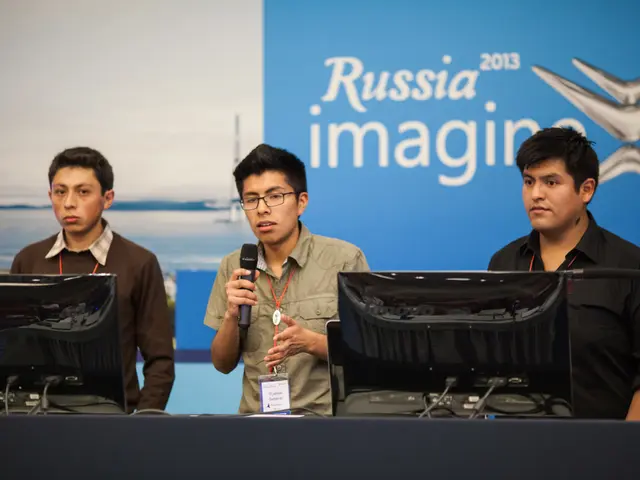Protein Potentially Led to Emergence of Human Speech Capabilities
Groundbreaking Study Uncovers Genetic Key to Human Language
Modern humans and Neanderthals share a staggering 99.7% of their DNA, yet humans are the only species that have developed complex spoken language. Scientists from The Rockefeller University may have found an answer to this centuries-long mystery through a novel discovery involving the NOVA1 gene.
A human-specific mutation in the NOVA1 gene, characterized by a single amino acid difference, appears to have influenced the way our ancestors' brains processed vocalization signals. This variant, found in almost all living humans but absent in Neanderthal and Denisovan DNA samples, could potentially explain the unique linguistic abilities of Homo sapiens.
The study, led by Yoko Tajima, centers on the NOVA1 gene, a critical controller of brain development that helps regulate neural pathways associated with motor control and communication. This variant, which involves a single amino acid substitution at position 197, seems to have significantly altered how early humans' brains processed vocal signals. According to the study's senior author, Robert B. Darnell, the discovery offers a potential mechanical explanation for one of humanity's defining traits – our capacity for complex spoken language.
Accurately pinpointing when our ancestors began speaking is challenging due to the lack of archaeological evidence. However, researchers agree that by around 50,000-100,000 years ago, modern humans had started engaging in behaviors strongly indicating advanced linguistic abilities, such as creating complex art, advanced technologies, and establishing trade networks spanning thousands of miles.
The NOVA1 mutation may represent a critical turning point in the linguistic evolution of early humans. According to Tajima, this change could have expanded our ancestors' capacity for verbal communication in ways that Neanderthals and Denisovans never experienced.
Researchers utilized CRISPR gene-editing technology to study the impact of the human-specific NOVA1 variant on mouse brains. Their findings showed that the modified mice produced altered vocal patterns, suggesting the human NOVA1 variant alters how the brain processes and generates sounds. Furthermore, the near-universal presence of this mutation in modern humans, combined with its absence in our closest evolutionary relatives, strongly suggests it emerged in an ancestral human population before the global dispersal of Homo sapiens.
Some theories propose that Neanderthals may have had a limited form of communication. However, the absence of the NOVA1 mutation in Neanderthal genomes suggests their linguistic abilities, if present, were significantly less advanced than those of modern humans.
The study has significant implications for understanding neurological conditions that affect speech and language. The NOVA1 gene encodes an RNA-binding protein, which, when disrupted, can lead to language delays, learning disabilities, and behavioral disorders. Understanding the gene's role in vocalization may lead to new insights and potential therapeutic approaches for speech disorders.
While this discovery represents a fascinating breakthrough, researchers emphasize that it only tells part of the story behind human language acquisition. Language development involves complex interactions between numerous genes, neural circuits, cultural factors, and environmental influences. Other genes implicated in language evolution include FOXP2. Future research will likely shed more light on this intricate puzzle, helping us better understand what makes us distinctively human.
References upon request.
The study's findings suggest that a human-specific mutation in the NOVA1 gene, involved in brain development and communication, could have played a significant role in the unique linguistic abilities of modern humans, setting them apart from Neanderthals. The study also implies that this crucial turning point in language evolution might provide valuable insights into medical conditions related to health and wellness, such as speech disorders.
Furthermore, advancements in technology, such as CRISPR gene-editing, enabled researchers to closely examine the impact of the human-specific NOVA1 variant on neural pathways, potentially opening new avenues for research in space and astronomy, as our understanding of the universe becomes more intertwined with our deepening comprehension of ourselves.








